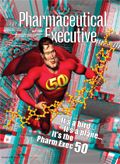Behavior and the Bottom Line
In an era of shrinking marketing budgets, increase ROI with behavioral science-based marketing.
"Half the money I spend on advertising is wasted; the trouble is I don't know which half."
John Wanamaker, the famous Philadelphia retailer, made that comment more than a century ago. Today, as the global financial crisis continues to gather force, his words resonate loudly with pharma marketers, who are being pushed to do more with less and be more accountable for every dollar they invest.

Jay Bigelow
Changing marketers' behavior requires understanding customer motivation and the ability to implement strategies and tactics that drive customers to engage with the brand. Behavioral science-based relationship marketing can be highly advantageous for the marketer determined to meet this challenge.
Not to be confused with "online behavioral targeting," behavioral science–based marketing goes deep into the human psyche to understand what motivates people to act as they do. This approach also builds models that show how to shift underlying beliefs or change resulting behaviors.
The insights and models behavioral science gives us, coupled with solid relationship marketing—including creative, planning, and execution—can provide a powerful glue that connects overarching brand positioning and awareness efforts to everyday tactics. And because behavioral-based relationship marketing uses a targeted approach, this strategy is extremely cost-effective, providing measurable results and demonstrable ROI.
Science Behind the Strategy
As the name implies, this form of relationship marketing is based on scientific data. A behavioral science-based approach begins by collecting information in order to unlock insights about the customer. It identifies proven, validated behavior models that are shown to predict outcomes and determine how to change behavior. Examples include the patient's or even the doctor's perceptions of the illness, severity of the condition, the patient's sense of control, and the healthcare provider's preferred learning style. Understanding these factors is critical to creating a dialogue and personal brand experience that will be likely to inspire behavioral change.
Applied to a marketing strategy, the predictive nature of behavioral science is used to understand a person's attitudes, preferences, and barriers to action; identify and engage the right customer for the brand; develop a blueprint for communications and creative strategies; and deliver focused, relevant communications on an individual level and maximize ROI.
Behavioral science can sharply focus targeting plans and provide information that is relevant to each specific customer who inquires about the brand. With this knowledge, pharmaceutical marketers can begin to build a relationship with their customers.
The Impact Factor
If it's done well, behavioral science-based marketing can address hidden attitudes and translate product benefits into assurances that are meaningful for the patient. For example, in the case of a breast cancer drug, the brand team sought to increase adherence among survivors taking a medication designed to help prevent the cancer from returning. An analysis of patients' behavioral motivators determined that for the brand to be accepted as a trustworthy source of that information and increase the likelihood of adherence, it was necessary to understand three things. First, the breast cancer survivors' community; second, the challenges women with breast cancer face every day; and third, what motivates breast cancer survivors to be adherent. Research also showed that patients need support throughout their lives, and that stress— caused by fear of recurrence as well as the stress of daily life—could be a key barrier to adherence.

Developing a Strategy
As a result of the research, the brand was able to deliver a multi-pronged, behavioral science-based program that provided techniques, tools, and resources to assist women in coping with stress and encourage them to seek social support. Program communications addressed both specific behavioral drivers and barriers to adherence and support. Tools for positive coping strategies ranged from educational materials to patient support groups. These communications converted leads and helped establish new and ongoing patient relationships, allowing women with breast cancer to better cope with the disease.
A very different challenge faced the makers of a brand designed to treat ADHD. Behavioral research showed that the attitudes of parents or other caregivers were influencing treatment, resulting in low compliance and persistence. Further research revealed that parents of children with ADHD not only often have a negative perception of the impact of the condition on their child's quality of life, but also experience daily stress.
To address these issues, the marketing team looked to a proven behavioral model. The Social Cognitive Theory model shows how responses and actions, environmental factors and beliefs, and attitudes impact compliance behavior in the ADHD category; it served as a guide for the entire communications program. Therefore, the communications stream, in this case newsletters, offered coping techniques for addressing environmental barriers and reducing stress, while other components focused on overcoming the reluctance of parents to administer medication to their children. In an unusual comparison study, the pharmaceutical company retained two agencies for the ADHD brand. One agency used traditional marketing methods, while the other applied a behavioral science-based approach. Patients and caregivers receiving relationship-marketing materials based on behavioral science generated a 13 percent increase in length of therapy, according to match-back data.
The Four Focal Points
An effective behavioral science–based plan should:
1. Identify which customers to spend money on based on predictions of what future actions they are likely to take. A good plan defines customer segments and separates them into groups based on their likelihood to respond, then determines which message will resonate with each group.
2. Create a conversational platform that engages each customer segment emotionally, making a behavioral connection while continuing to support and enhance the core brand proposition. A "one size fits all" approach is unlikely to engage the patient in a meaningful dialogue. Marketers need to understand the patients' mindset and develop communications materials that speak to their immediate needs.
3. Provide a cost-justified engagement plan that reveals which touch points are likely to yield the greatest returns. How many communications will it take to get the desired result? How can the team leverage other brand assets to maximize the return on spending?
4. Facilitate a measure of success. This is perhaps the most important attribute of a good plan. Brand managers should ask themselves: What are the key performance metrics? What is the allowable amount to spend and what is the acceptable break-even point and ROI? A well-designed behavioral science–based, relationship-marketing program can focus resources on people the brand is most likely to move. Because the goal is to engage in a dialogue, built-in measurement points such as levels of engagement, satisfaction or click-throughs can be used. Since relationship marketing is an ongoing strategy, current and year-to-date results can be tracked.
Behavioral science-based relationship marketing is not a replacement for traditional marketing. It's a way of doing more with less. As a strategy, it is particularly effective for the pharmaceutical industry, where decisions—such as visiting the doctor, writing or filling a prescription, and continuing to take a medication in the prescribed manner—are often based on emotional and psychological factors.
By using behavioral science to predict and understand behavior, which is a prelude to changing it, pharmaceutical manufacturers can tailor a brand experience to those who are most likely to respond. In this day and age, when it is the enlightened customers themselves who decide what they want to know, when they want to know it, and how they want to experience it, this approach might be far more appropriate.
Jay Bigelow is president of MicroMass Communications. He can be reached at jay.bigelow@micromass.com
The Misinformation Maze: Navigating Public Health in the Digital Age
March 11th 2025Jennifer Butler, chief commercial officer of Pleio, discusses misinformation's threat to public health, where patients are turning for trustworthy health information, the industry's pivot to peer-to-patient strategies to educate patients, and more.
Navigating Distrust: Pharma in the Age of Social Media
February 18th 2025Ian Baer, Founder and CEO of Sooth, discusses how the growing distrust in social media will impact industry marketing strategies and the relationships between pharmaceutical companies and the patients they aim to serve. He also explains dark social, how to combat misinformation, closing the trust gap, and more.
